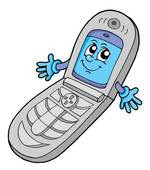Sarah Flanagan
LIS 855
Blog Entry # 3
July 4, 2009
“If you happen across the Iraq Body Count Web site, you will be accosted by a shot of B-2 bombers dropping payloads against the backdrop of a serene blue sky. “If all goes 100% as planned (the bomb does not fall outside of its specified margin of error of 13 meters, and the GPS guidance system is not foiled by a $50 radio jammer kit, easily purchased), then here is what one such bomb does: everyone within a 120 meter radius is killed," the home page states. Next to the text, a stopwatch clocks Iraq's civilian dead. At press time, there were approximately 300 minumim and 400 maximum, according to the site.” (http://proquest.umi.com.ezproxy.library.wisc.edu/pqdweb?index=1&did=320685181&SrchMode=1&sid=1&Fmt=3&VInst=PROD&VType=PQD&RQT=309&VName=PQD&TS=1246727232&clientId=12286 This article points out that numbers like this are not released except by the Pentagon. This web site is supposed to be an accurate count of important newsworthy information. Iraq is the current political issue and news reporters want to appear to be giving out reputable information. The article goes on to state that, “iraqbodycount.net, gets 100,000 hits a day.” This shows that people use these news items for money and fame.
In the past few weeks we have seen countless examples of citizens taking the news into their own hands. Individuals believe that they can better tell a story from their own point of view. Many times the story that is conveyed is very opinionated and false. Common tools that we utilize daily have become the public’s way of transferring news stories from one to another. The internet, cell phones, and digital cameras allow images to be taken and put up on the internet in a matter of seconds. News is now available 24/7 and people don’t stop to think about what they are doing and how it could affect others. This week in the news there have been many high profile stories that have been corrupted.
One of the first news worthy stories that has happened is Michael Jackson’s death. I was at work when he died and someone came to the circulation desk and told us that he was dead. The staff immediately looked at MSN.com which was reporting that he was rushed to the hospital but that they were still trying to save his life. Already people using Face Book, My Space and Twitter had found out that he was dead before it was announced by a reputable source. “Patrick Swayze, who is battling pancreatic cancer, recently had to defend that he is indeed still alive after thousands of Twitter uses spread the news that he was dead.” (Coyle) This is the weakness of instant news because sometimes false information is given.
The Iran election has also been another heated issue this week in the news. The Coyle article stated that, “While involvement in the protests in Iran might be Twitter’s most meaningful achievement thus far, some have noted that inaccuracies were circulated.” (Coyle) Following the presidential election in Iran, as a result of the protests and quite public displays of outrage followed by the attacks on demonstrators by government police squads, the reputable news agencies had been ordered to leave the country. Protesting citizens continued to take pictures and were posting photos and video by using cell phones and internet sites. The Iranian government decided to shut down their internet and other devices so that their news could not be leaked out of their country to the rest of the world. So many people have been allowing images and results of their elections to be reported on by the public. These elections are important and need to be reported on by a reputable source.
How do we know what sources are reputable? This is a question that needs to be considered by television, internet, cell phone, and Twitter users. News is transmitted from sources and directly put on the internet. People can now put their life stories on the internet and put whatever pictures they want on the internet. This information can be copied or sold to a newsworthy source. The copyright laws should protect these personal photos and information. We are a part of the news that we make. Who should be able to determine what news can be used and copied on the internet?
News is available to the public 24 hours a day. We are constantly bombarded by stories and opinions based on news stories. Nothing is filtered and we become exposed to these stories all the time. Sometimes we need to break away from these stories and begin to realize that there is more to life than constant news coverage. With increased technology exposure to positive and negative news is constant.
According to the an article by Jake Coyle entitled Is Twitter the News Outlet for the 21st Century it states that, “Twitter’s constantly updating record of up to the minute reaction has some instances threatened to usurp media coverage of breaking news. It has also helped many celebrities, athletes and politicians bypass the media to get their message directly to their respective sites.” (Coyle) Getting the news quickly is helpful because it allows news to be immediate. People expect things instantaneously and want immediate gratification. News needs to not only be instant, but reliable so that this great technology can be utilized in a positive manner.
We hear positive and negative news constantly and have to determine whether the news is precise or inaccurate. With the use of increased computer and phone technologies news is always available for viewing.
Bibliography:
Coyle, Jake. (2009) Is Twitter the News Outlet for the 21st Century. Associated Press MSNBC Online. Retrieved July 1, 2009, from http:// www.msn.com/id/31681758/ns/technology_and_science-tech_and_gadgets/pri
Suzanne Smalley. (2003, April). Counting civilians: Iraq's war dead. Newsweek, 141(14), 11. Retrieved July 4, 2009, from Research Library Core. (Document ID: 320685181).
Subscribe to:
Post Comments (Atom)






No comments:
Post a Comment